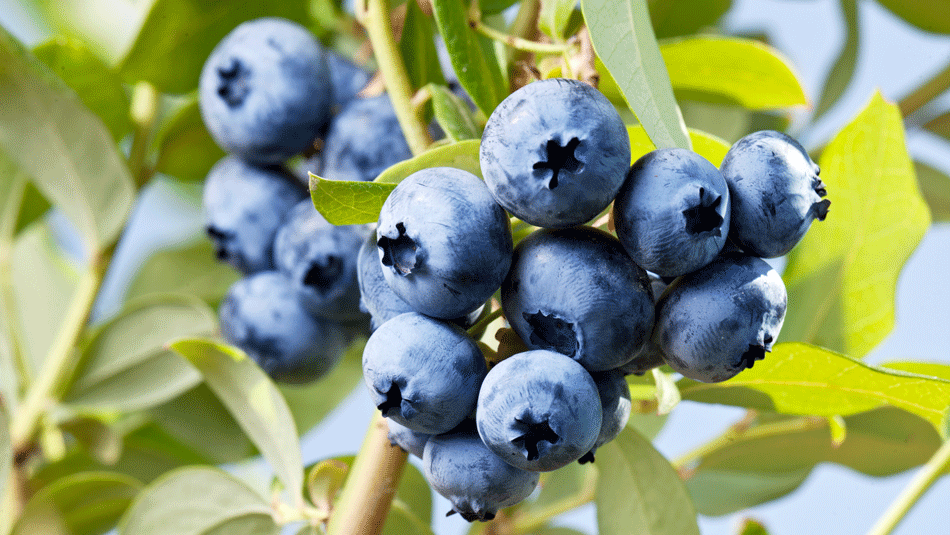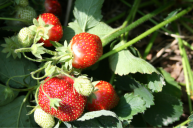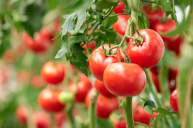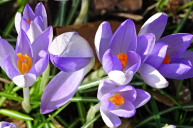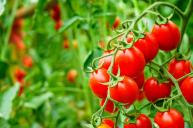Summer is about to be in full swing, and that means blueberry season! There's nothing quite like spending a summer day foraging for blueberries - especially in the South. If you don't have time to go pick your own, or can't wait that long, then grow some at home. When it comes to container-grown plants, blueberries are one of the easiest fruit plants to grow for the home gardener. Blueberry plants can flourish in a container, so lack of yard space for a garden is no problem when it comes to this fruit.
Videos by Wide Open Country
Blueberries have a shallow root system, which makes them ideal for growing in a container. While other plants need plenty of room for their roots to thrive, the blueberries will do just fine without a massive garden to grow in. When choosing a container size, a 12-inch container will suit a newly planted blueberry bush just fine for the first couple of years. Over time, the blueberry bush will outgrow the container. At this point double the size of the container by transferring to a 24-inch pot.
Blueberries are a summer fruit for a reason, they love the sun! Be sure to place your container in a sunny location. Blueberry bushes need an average of 6-8 hours of sunlight a day. They will tolerate partial shade, but are less likely to produce more berries if not given adequate light. Monitor an area before placing your container there to ensure that area receives enough sunlight.
With lots of sun comes lots of water. Blueberry bushes are thirsty plants, especially when being established. The soil needs regular water to remain moist, but also keep it well drained. They don't like to sit in a pool of water. To make the process flow, you can set up a drip system to ensure that they get the water they need without going dry.
The container is also an advantage for growing blueberries because they need highly acidic soil. Most garden soil is not at the pH level (4.5-5.5) they need, so secluding them to a container gives them a chance to thrive.
When choosing soil, an acidic potting mix designed for plants like azaleas and rhododendrons works well. You can also add peat moss to a planting mix to adjust the pH level, and organic matter like pine bark, sawdust, or wood chips to maintain soil acidity. They will also require a bit of fertilizer that's best added early spring. Organic fertilizer such as cottonseed meal works well.
https://www.instagram.com/p/BVX05Q8gWdp/?tagged=blueberries
The proper soil materials can be found at your local garden center or nursery. Be sure to check the soil pH level every couple years to make sure it's still on par. Doing a soil test will ensure proper conditions for your blueberries to thrive.
Like people, blueberries flourish best when they have a few friends. One to two other blueberry bushes in close proximity can help with pollination. Many varieties rely on pollinators to produce fruit so it's best to choose other bushes that flower at the same time. Doing so will result in a a better blueberry harvest as well as provide a habitat for pollinators like bees.
When choosing which type of variety, there are five main blueberry varieties in the United States to consider - lowbush, northern highbush, southern highbush, half-high, and rabbiteye blueberries. A few different varieties may require cross pollination, while even the self-pollinating highbush type - the main type grown throughout the world - will produce a better yield with another cultivator nearby.
With lack of space, lowbush blueberries are the way to go. Like their name states, they are shorter bushes and will take up less space. You also won't have to prune lowbush blueberries as much as other varieties.
If you're looking for a variety that producers large berries, the southern highbush O'Neal is one of the best varieties. These highbush blueberries are best suited for areas with mild winters since they blossom in late winter.
If you're looking for a consistent yield, the northern highbush Bluecrop are one of the best. They produce smaller berries than the O'Neal, but are just as delicious and they can withstand the winter chills. Blueray is also nice as these northern highbush blueberries have heavier fruiting, allowing you to enjoy more delicious fruit.
When you plant blueberries, each variety will require a different time to be planted throughout the season. Planting blueberries throughout the season will ensure a summer long harvest. Usually late winter or early spring - depending on your last frost - is the best time to plant. You'll have to determine what your USDA Hardiness Zone is in order to know what season and which varieties grow best in your area.
If you're worried about birds getting to your fruit before you do, you can net the the bushes. Netting them before they ripen will keep out any unwanted guests. That way you can save the fruit for salads, baked goods, and smoothies.
If your new blueberry bush is not producing fruit in the first 2-3 years, don't be discouraged. Fruit production in young plants takes a long time - but once they do produce you'll reap the benefits!
Since you're probably thinking about nothing but eating some delicious berries, here's a Blueberry Casserole recipe for inspiration. Happy planting!
